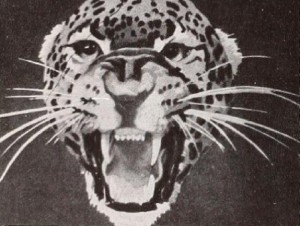
"Competence plus completeness distinguish Ringling Brothers and Barnum & Bailey Circus. Oscar H. Horovitz started his film with sequences of the circus's winter quarters in Florida and followed it as it entrained for Northern performances. Unloading the circus comes next, and, after informal views of the crews at work setting up tents and the performers preparing for work, there is a complete picture of the show in the big top. The quality of the lighting, although limited by the amount of illumination provided by the circus, is still astonishingly good. Even better is the sequencing of the scenes of the performances, for Mr. Horovitz succeeds in altering his camera positions almost as freely as if the circus were staged especially for him." Movie Makers, Dec. 1943, 478.
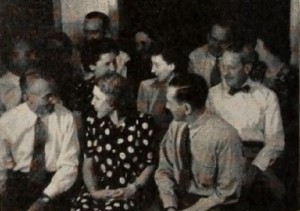
"This clever 16mm. picture is amazing in several ways, but two characteristics stand out. It is only 250 feet long and it was completely filmed, with the exception of the double exposed titles, in one evening. George Merz, the producer of this novel study, warned his guests that, when they came to see the Louis-Conn fight televised, they would have to earn their way by acting in his production. Ringside Seats at Home shows the guests arriving, reacting to the fight and paying off bets. It also contains surprisingly clear footage of the fight itself, including the knockout in the eighth round. A unique and attractive picture, the movie shows what can be done if you work a little, pray a little and gamble a lot." Movie Makers, Dec. 1947, 539.
"A travelogue depicting the characteristics and life of this South American city. From the star, upon landing at the airfield in Rio, good photography is noted throughout the film." PSA Journal, Dec. 1955, 37.
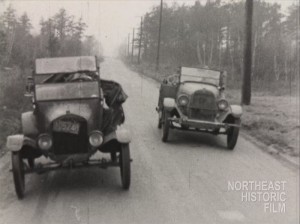
"A fender-bender drama calling for driving the cars up and down crashing into each other and trying to force each other off the road." oldfilm.org
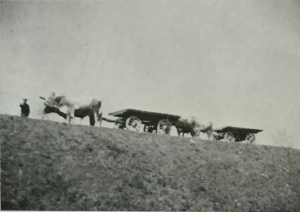
"doc. a fantasia"/avant-garde documentary Risveglio, regista Vittorio Cossato, collaboratore tecnico Antonio Marzari. Il film presenta in una successione di inquadrature rigorosamente fisse, il contrasto tra il passato e il presente espresso talora attraverso simboli (come nella prima parte l'uomo che, visto di schiena cammina per un terreno paludoso, triste e squallido) ma quasi sempre per visioni di natura, di nuove generazioni al lavoro nel traffico dei porti, delle strade e nelle adunate. Vi sono dei passaggi freschi e il film nel complesso non manca di una certa omogeneità ritmica. Awakening, director Vittorio Cossato, technical collaborator Antonio Marzari. The film presents, in a succession of rigorously fixed shots, the contrast between the past and the present, sometimes expressed through symbols (as in the first part, the man who, seen from behind, walks through a sad and bleak, marshy terrain), but almost always through visions of nature, of new generations at work in the traffic of ports, roads and rallies. There are some fresh passages and the film in its entirety does not lack a certain rhythmic homogeneity. —Il Ventuno 29 (Review of the G.U.F. of Venice), June 1935, p. 16
"The faded colours do not detract from this charming record of life in Preston, on the river Ribble. Children play in the street, women stroll in Avenham Park, and shoppers crowd an outdoor market. Community events and the bright lights of Preston at night complete this picture of life in the Lancashire town (now a city)." (BFI Player)
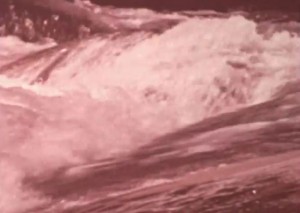
"This film takes the viewer through the formation and life of a river. From raindrops to rapids, this film shows freshwater and how it moves through our environment," via SUNY College of Environmental Science and Forestry.
"In Rizumu 1932 nen (Rhythm 1932, 9.5mm, 1932), Kaneko played with rhythm by means of editing, this time by thematizing a large construction site where he captured machinery and workers. While he did not use as many shots of short duration as he did in Kōkyōgaku, he meticulously combined close-ups with various shots of low and skewed angles. In his personal memo, Kaneko left only a one-sentence description of Rizumu 1932 nen, suggesting that the film reflected his effort to create a rhythmic composition by integrating themes and styles." - Noriko Morisue, "Filming the Everyday: History, Theory, and Aesthetics of Amateur Cinema in Interwar and Wartime Japan" (Yale University: PhD Dissertation, 2020): 110.
"Color film celebrating Turner's love for classic automobiles. Turner discovers an old road named Callao and becomes interested in exploring the dirt road with his classic Dodge. Film shares the history of the pony express in Utah." Church History Library.
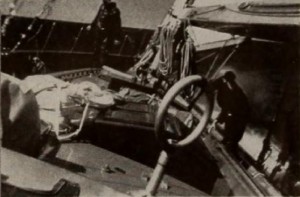
"Lovers of boats and devotees of movie making alike will probably never see enough of Rochester Race, produced by Walter F. Chappelle jr. in the summer of 1952. For this picture is one of the most complete and authentic records of big-league yacht racing that has been produced to date. For big league indeed was the 72 foot yawl Escapade, owned by Wendell Anderson of the Detroit Yacht Club and sailing as scratch boat in the Rochester point-to-point race westward to Hamilton, Ont., eastward to Stony Point Light, and then back to the Rochester inlet. And big league too was Mr. Chappelle's detailed coverage of this grind, as the proud beauty — with a crew of fourteen and 2630 square feet of working sail area — barreled through heavy seas, slatted and drifted in the calms — but came home by 38 seconds the winner. Working under difficult (and often dangerous) conditions, the producer nevertheless achieved a variety and quality of scenes which are amazing. His handling of side or back lighting, as a big Genoa or spinnaker jib arched out from the Escapade, creates many moments of breath-taking beauty. With Rochester Race Mr. Chappelle has proved beyond the cavil of superstitious yachtsmen that a fine movie may be made on a fine racing craft — and yet still win the race." Movie Makers, Dec. 1953, 332-333.
Total Pages: 203